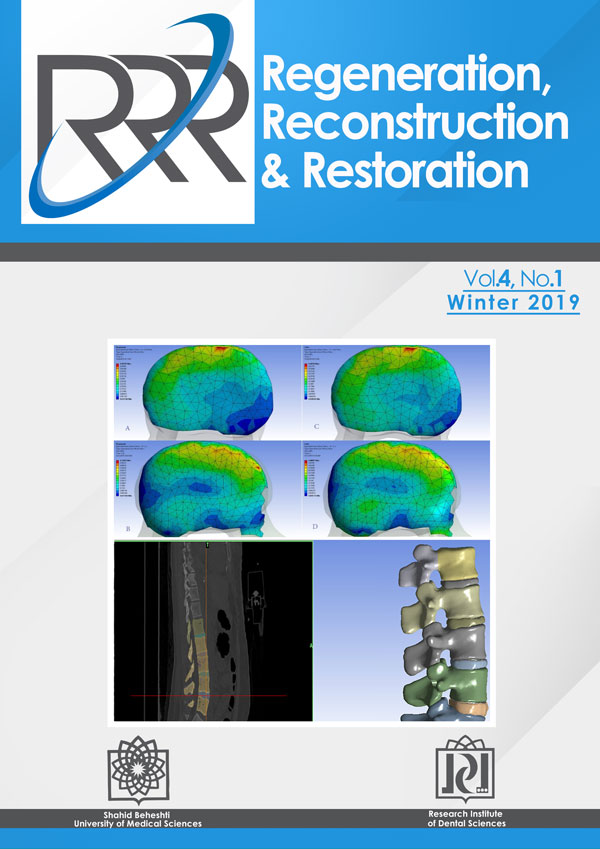Root Surface Roughness after Treatment with Manual Curette and Er:YAG and Er,Cr:YSGG Lasers
Journal of "Regeneration, Reconstruction & Restoration" (Triple R),
Vol. 4 No. 1 (2019),
2 February 2020
,
Page 3-8
https://doi.org/10.22037/rrr.v4i1.29551
Abstract
Introduction: This study compared the root surface roughness following scaling and root planning with manual curettes and different powers of Er:YAG and Er,Cr:YSGG lasers using surface profilometry and scanning electron microscopy (SEM).
Materials and Methods: In this in vitro experimental study, 50 extracted teeth were buccolingually sectioned into two halves. The obtained contaminated surfaces randomly received the following treatments: SRP with manual curettes (group I), Er:YAG laser irradiation (4 W) (group II), manual curette+Er: YAG laser (1W) (group III), manual curette+ Er,Cr:YSGG laser (150 mJ) (group IV) and Er,Cr:YSGG laser (250 mJ) (group V). Surface roughness (Ra), surface changes (Rz) and maximum roughness changes (Rmax) were calculated before and after treatment while the surface morphology was examined by SEM analysis. The differences in roughness parameters were statistically analyzed using Wilcoxon signed rank test for each modality.
Results: Except for the manual curette group (I) in which the roughness parameters decreased significantly (P<0.04 for all), Ra, Rz and Rmax increased in the remaining groups. The reported increases in group II (4W Er:YAG)(P<0.005, P<0.007 and P<0.03, respectively) and group V (250 mJ Er,Cr:YSGG) were statistically significant (P<0.01, P<0.05 and P<0.05).
Conclusion: Within the limitations of this study, irradiation of Er:YAG and Er,Cr:YSGG lasers at both powers with and without using manual curettes increased surface roughness values compared to using manual curettes alone. Greater roughness values were obtained by increasing the power of lasers.
- Scaling
- Surface Roughness
- Manual Curettes
- Laser
How to Cite
- Abstract Viewed: 121 times
- PDF Downloaded: 86 times
